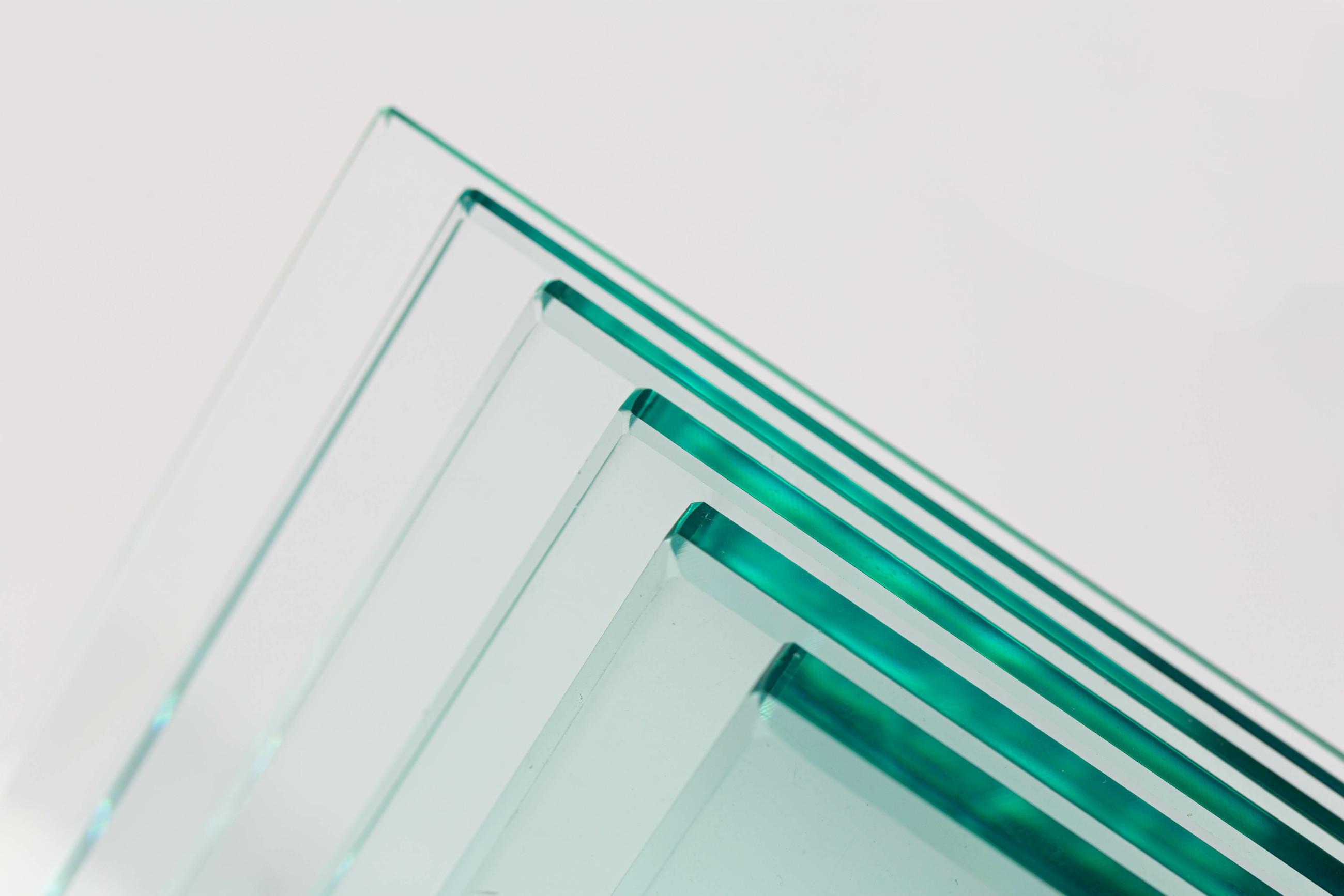Float glass
The float glass process is the most common method of flat glass production in the world. This process basically involves melting silicate (sand), lime and soda in a furnace and floating it onto a large bed of molten tin, hence the name float glass. This mixture slowly solidifies over the molten tin as it enters the annealing oven where it travels along rollers under a controlled cooling process. From this point the glass emerges in one continuous ribbon and is then cut and further processed to customers’ needs.
Metro Glass has many stocked sizes of float glass including 2, 3, 4, 5, 6, 8, 10, 12, 15 and 19mm.
Low iron glass
Standard clear float glass has an inherent green tinge, which is more apparent when viewing the edge of the glass, or in stacks of glass panels. This is due to the iron content in the silicate (sand). Clear Vision low iron glasses contain approximately one quarter of the iron content of standard clear float glass, providing a Clear Vision glass that is clear in appearance.
Clear Vision glass is ideal in decorative and furniture applications, showcases, showers, shop fronts and toughened glass entries. In particular areas that have white backgrounds like the white tiles in a shower benefit from the use of Clear Vision to avoid the green tinge often seen with standard float glass.
Clear Vision can be used in rooflites and atrium glazing when solar control is not a factor. Clear Vision glass is ideal for applications requiring colour backing or painting due to high light transmittance and true colour appearance.
Metro Glass has many stocked sizes of low iron glass including 4, 5, 6, 8, 10, 12, and 15mm.
Summer Holiday Closure: 19 December 2025 – 12 January 2026
Metro Performance Glass will be closed for the summer break from midday Friday 19 December 2025 and will reopen Monday 12 January 2026.
Wishing you a safe, relaxing and enjoyable holiday season!
